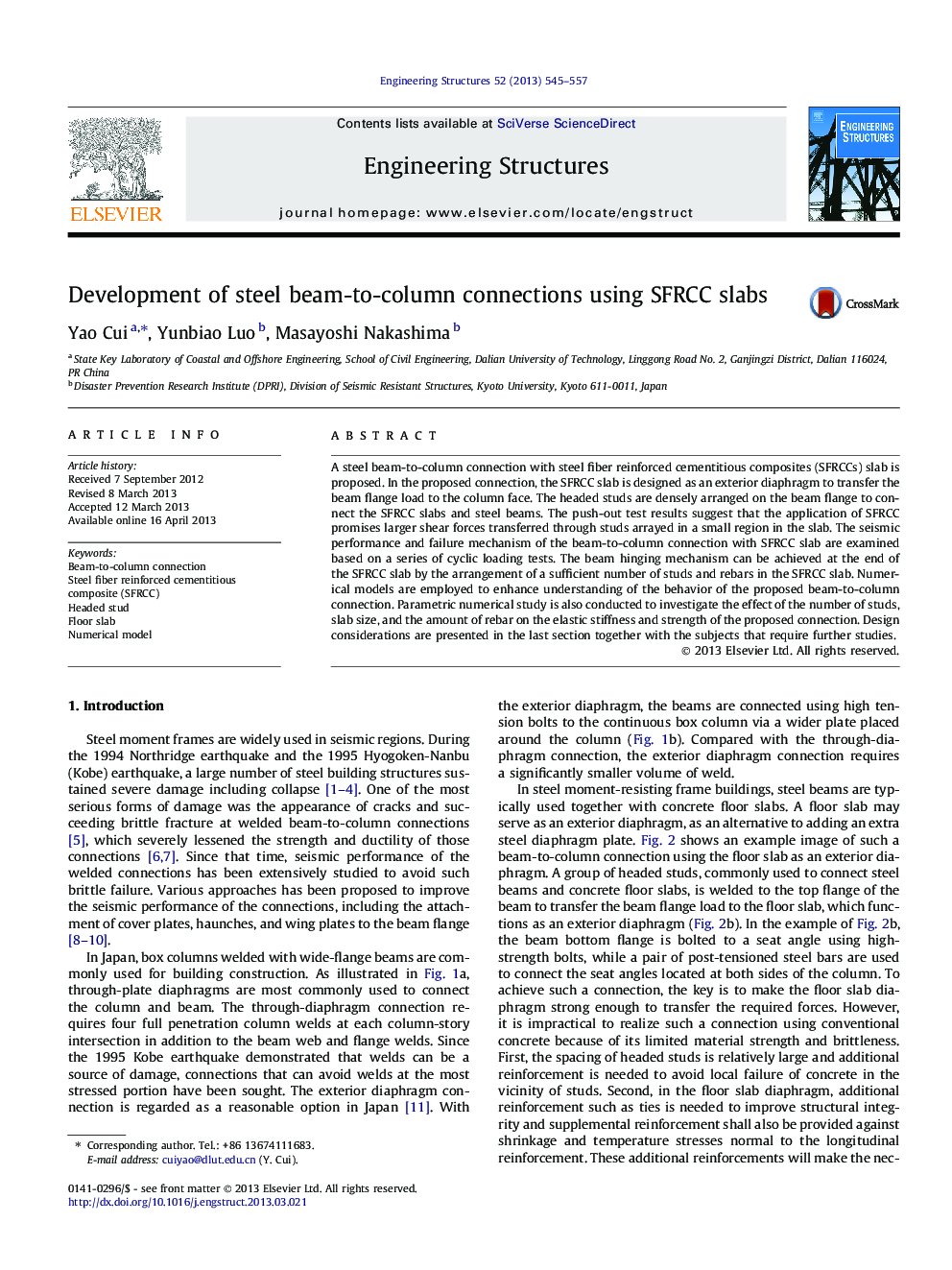| Article ID | Journal | Published Year | Pages | File Type |
|---|---|---|---|---|
| 266974 | Engineering Structures | 2013 | 13 Pages |
•A SFRCC slab was proposed to serve as an exterior diaphragm.•Push-out tests were conducted to investigate the capacity of studs in SFRCC slabs.•Tests were conducted for the proposed beam-to-column connection.•Numerical study was conducted to further study the proposed connection.
A steel beam-to-column connection with steel fiber reinforced cementitious composites (SFRCCs) slab is proposed. In the proposed connection, the SFRCC slab is designed as an exterior diaphragm to transfer the beam flange load to the column face. The headed studs are densely arranged on the beam flange to connect the SFRCC slabs and steel beams. The push-out test results suggest that the application of SFRCC promises larger shear forces transferred through studs arrayed in a small region in the slab. The seismic performance and failure mechanism of the beam-to-column connection with SFRCC slab are examined based on a series of cyclic loading tests. The beam hinging mechanism can be achieved at the end of the SFRCC slab by the arrangement of a sufficient number of studs and rebars in the SFRCC slab. Numerical models are employed to enhance understanding of the behavior of the proposed beam-to-column connection. Parametric numerical study is also conducted to investigate the effect of the number of studs, slab size, and the amount of rebar on the elastic stiffness and strength of the proposed connection. Design considerations are presented in the last section together with the subjects that require further studies.
